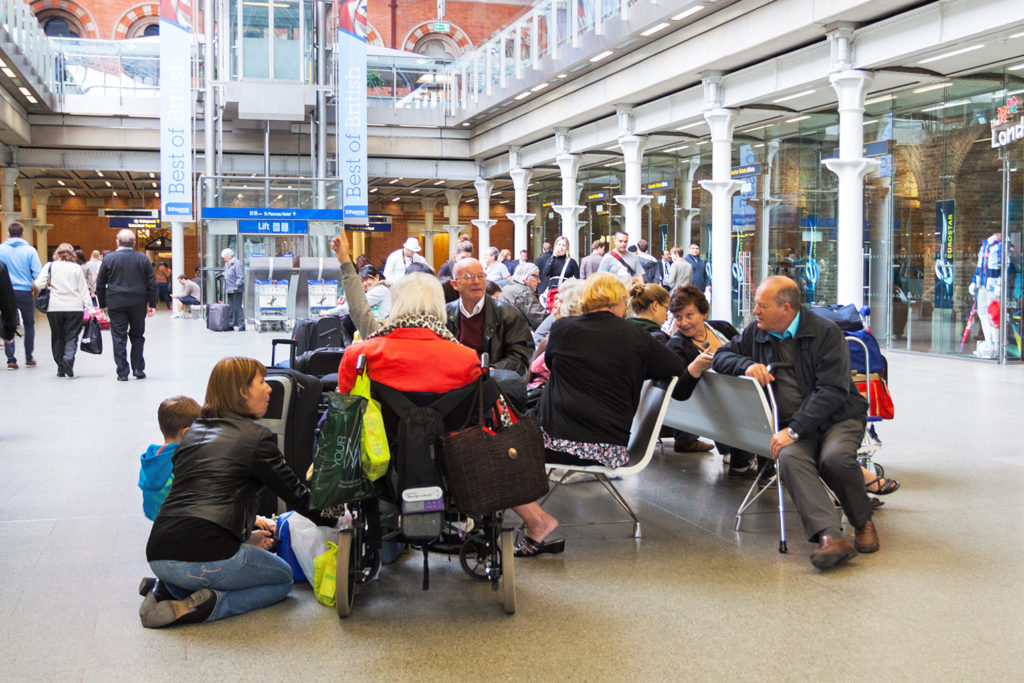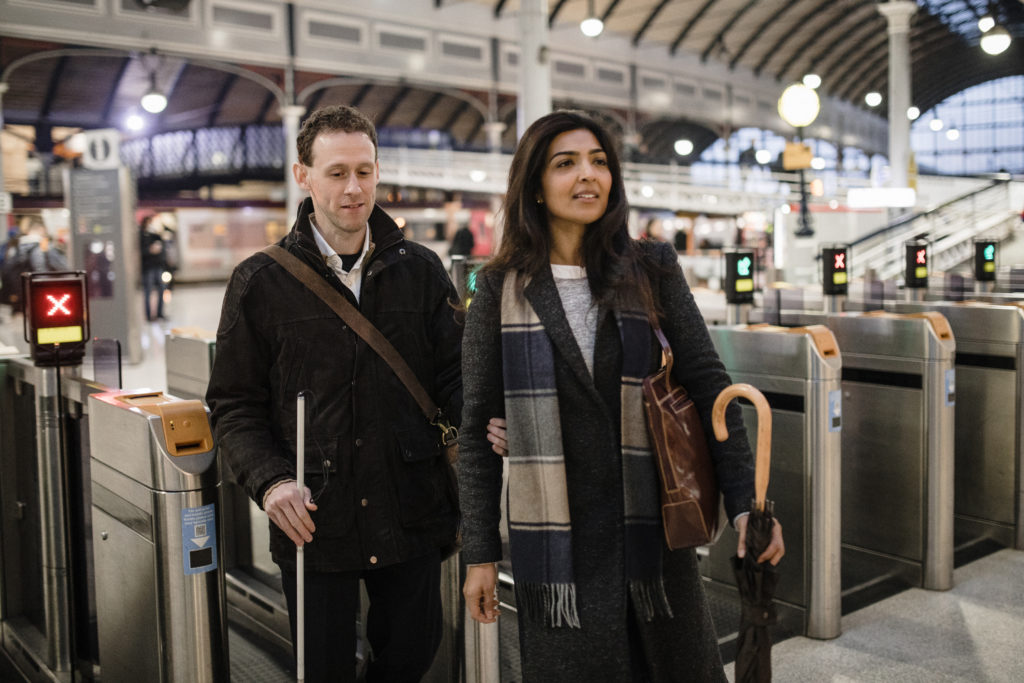Travelling by train can pose challenges for all of us: finding our way around complex stations, making decisions about routes to take, getting seats on a crowded service and reacting to changes when they occur. This can be difficult enough for anyone, but for those who have limited mobility or sensory impairment, the thought of dealing with these issues can be a strong reason to choose an alternative way of travelling. If we are to support the modal shift to sustainable transport and significantly reduce carbon emissions, we need to make the railway as accessible as possible for all passengers.
To help achieve this, Siemens Mobility Limited has worked with the University of Cambridge, Astutim and KeolisAmey Docklands, as part of a research project funded by the Rail Safety and Standards Board (RSSB). Its purpose is to investigate how well the industry caters for people who are disabled or impaired, and how we can develop new technology and adapt existing approaches to improve their experience of using the railway.

Out of a population of some 64 million people, around 10% have impaired vision, 5% hearing, 15% mobility, 15% memory or concentration, and 17% impairments to their hands or arms. And more than 60% of those over 75 have less than full ability. The proportion of the population in that older age group is increasing, but with people wanting to remain mobile for as long as possible, public transport has an important role to play in supporting independent living.
The current methods used to assess people’s ability to access our transport networks tend to be subjective and lack rigour. They often focus on wheelchair users (who account for only 1.7% of the population) and blind people (representing 0.6%). The project team recognised that the transport sector badly needed a more objective approach to auditing, one which would take proper account of impairments and include the larger number of people who have multiple impairments. It should also be able to allow an assessment to be made of how accessible the digital interfaces are that deliver passenger information – whether that is through a station display, a mobile app on a smartphone or some other means.
The four project partners launched the ‘Towards the Inclusive Railway’ programme, its aim being to identify ways of significantly improving the customer experience for all passengers, particularly elderly people and those who suffer from multiple minor impairments to vision, hearing, thinking, reach, dexterity and mobility.
Sign of the times
The project based its work on the Docklands Light Railway (DLR), which is the busiest light rail operation in the UK. In 2019/20, the DLR carried 117 million passengers and, before the Coronavirus pandemic hit the UK, around 370,000 passengers used it each weekday.
DLR is a step-free network, with escalators or lifts available for passengers to use at its elevated stations, served by an automated train system. The railway is largely unstaffed, with only four of its 45 stations being permanently staffed. Any faults with the station facilities, equipment or services are therefore potentially problematic for passengers.
A feature of the DLR is that is has numerous interchanges with both London Underground and main line operators. Some of these interchanges are quite complex – for instance, at Canary Wharf and Canning Town – and therefore good quality, accurate information is vital for passengers to be able to move easily around stations.
To assess the quality of information available to passengers, the project team developed a new digital assessment tool – to work with the University of Cambridge’s existing Exclusion Calculator model – and applied this to understand any barriers which exist to passenger information that may hinder or deter passengers from using the railway.
The audit found that many aspects of the DLR support a good travel experience, but some of the line’s complexities make it challenging. It was felt that both visual and neural demands could be eased by the addition of some new fixed and electronic signage. As a result, a number of prototype information signs were developed and piloted, with a series of trials run by KeolisAmey Docklands. The signs featured a larger font and were carefully positioned out of direct sunlight to allow passengers to read and react to the information in good time. The screens were less cluttered, stripped down to just the key information, including times and departure locations for the next trains.
Following the installation of the trial signs, a second audit was undertaken to evaluate their impact. This found that they resulted in both a reduced mobility demand and a reduced concentration requirement, with the signs negating the need to stand and pore over different maps and display boards.
Getting smart
The team also audited a European travel app which was found to be well designed for those who are familiar with digital interfaces and smartphone technology. However, it was not helpful to inexperienced users of mobile communications devices, estimating that at least 34% of the population was excluded from using the app, either due to a lack of access to the necessary technology or resulting from passengers’ attitudes and capabilities with digital interfaces.
This audit has helped Siemens Mobility to develop new and adapted mobility services based on the company’s portfolio of digital solutions, including its app-based Traveller Relationship Manager (TRM) solutions.
The TRM system uses Bluetooth low-energy beacons at strategic locations which enable passengers to get information on their smartphones when they are close by. It is planned that this technology will be used for detailed navigation within stations – or other locations where GPS signals are weak or non-existent – to help passengers find their way quickly and easily to their platforms or other station facilities, such as lifts, toilets and shops.

A new application called SiMobility Flow has also been developed to help passengers navigate their way within and around stations. A prototype was developed using Canning Town Station, with a 3D model generated to allow passengers to follow a virtual walkthrough display which guides them to be in the right place at the right time.
Passengers are provided with information in real time about their next available travel options and directions are given to the right platform, or to a reserved seat on the train, as well as providing information about their onward journey by taxi, bike or other methods.
A trial was also developed whereby messages could be displayed via the TRM system, with information received from the digital station manager software. The example chosen was a ‘lift out of service’ message which would be detected by the system and relayed to the TRM, immediately alerting passengers via mobile screen messaging and fixed wayfinding display information.
Testing has been undertaken at a series of events, with more – incorporating travelling customer feedback – planned to take place following the lifting of COVID-19 restrictions. All these, combined with future studies and pilots, will help improve accessibility, uptake of public transport and drive railway decarbonisation.

